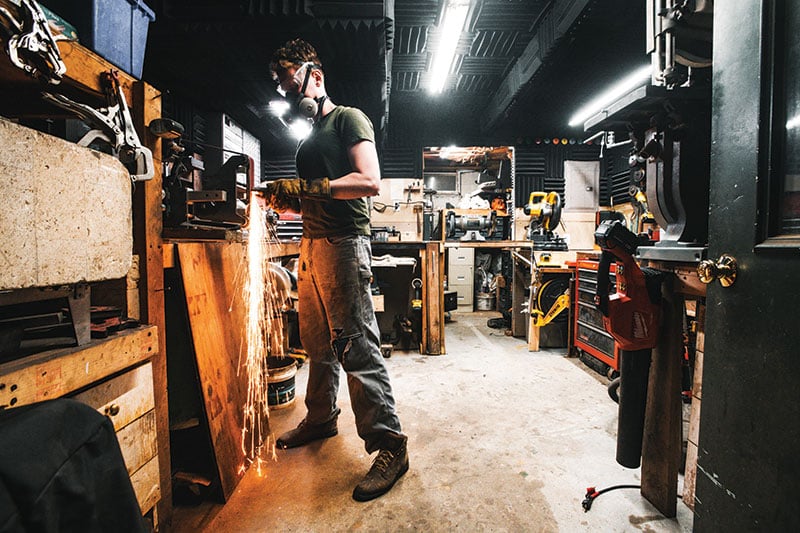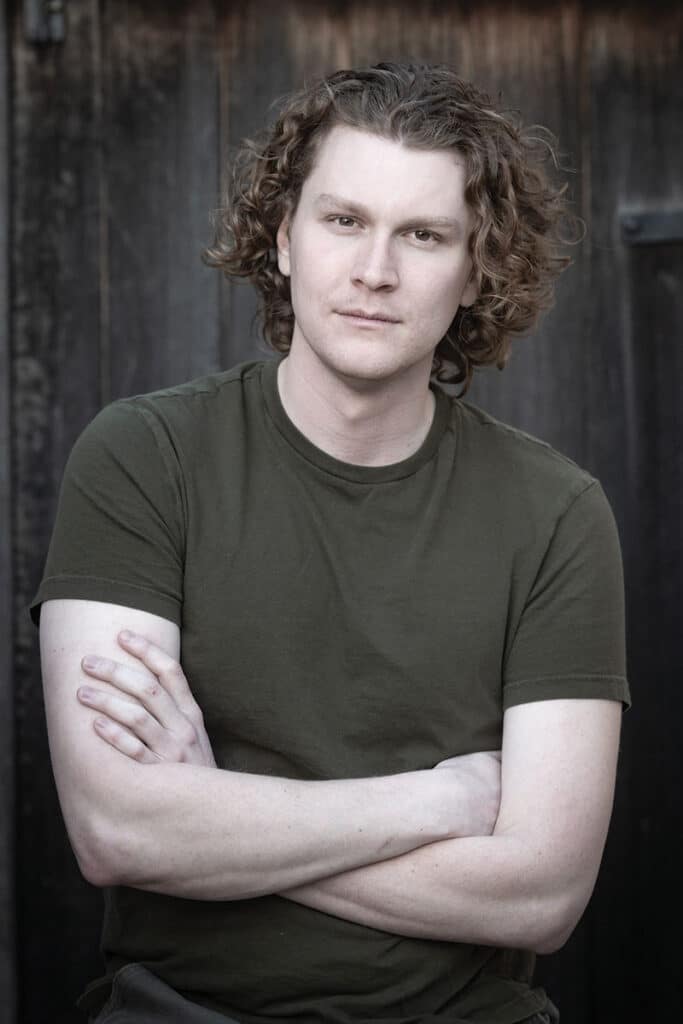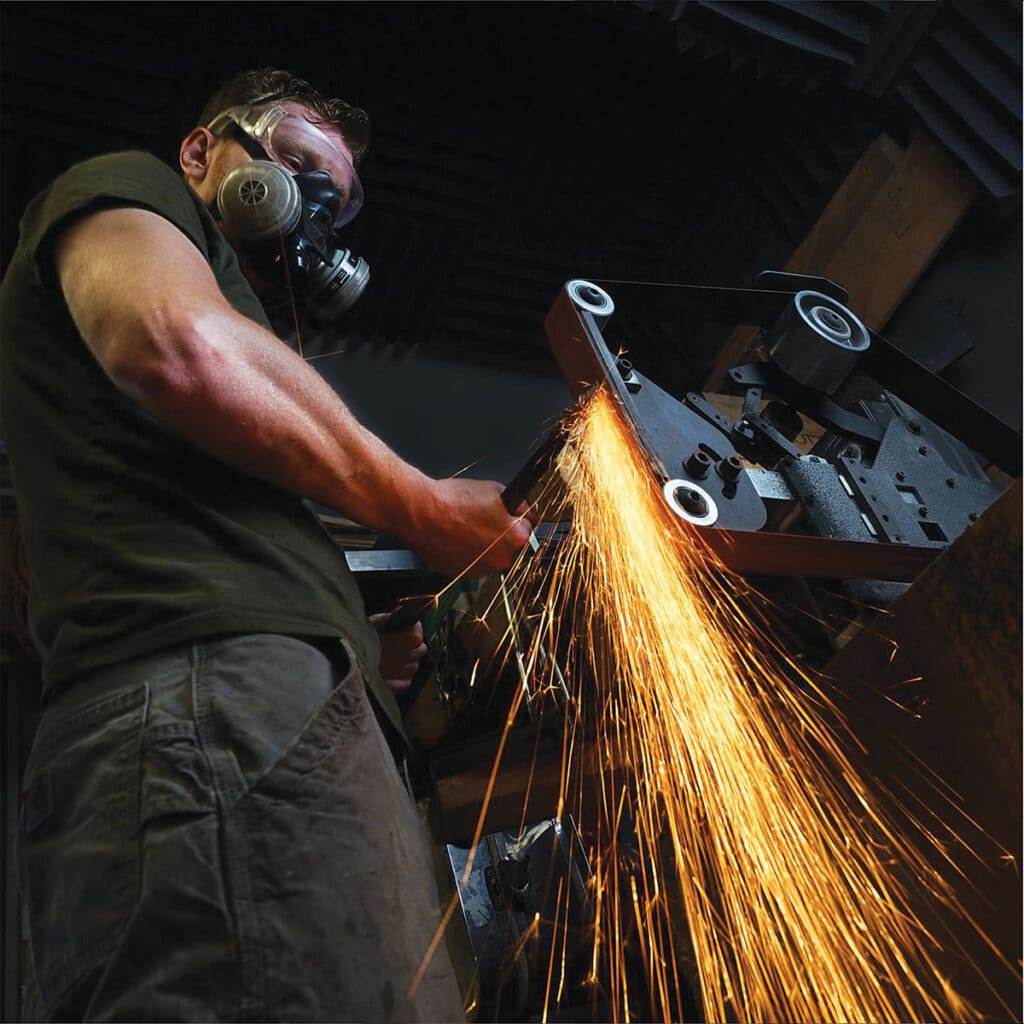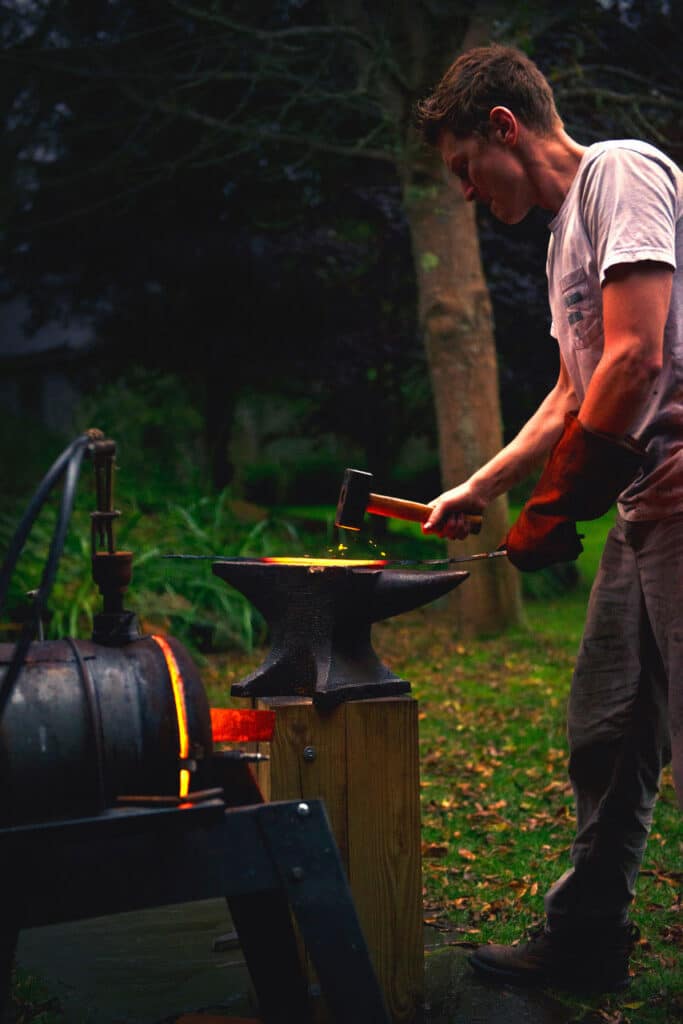by C. Oscar Olson
Nantucket is a place where, in more ways than one, time seems to stand still. Ageless architecture, timeless tradition, and untouched landscapes make this island unique in so many wonderful ways. Modern technology makes better the life of every person, and, though that is an undeniable reality, there’s certainly something to be said for doing things the old way.
Which might be why slower, older things tend to get a foothold on this island 30 miles out to sea. From hand-carved signs adorning storefronts to handmade boats peppering the seashore, keeping with tradition means certain skills will simply never go out of style. One of the oldest and most important of those is blacksmithing. Robots, A.I., and automation have not won the day just yet.
Born and raised on the island, Nantucketer Keaton Goddard always knew he wanted to work with his hands. “I knew it’s what I wanted to do, and I knew I wanted to work for myself,” he says. “There was a passion waiting for me that I could turn in to a business.”
After spending eight years working the craft as a hobby and a few years in sales with a metal-working company, it was just two years ago that Keaton stepped things up and walked his own road. Though he is self taught, his degree mechanical engineering surely comes in handy. “I’ve always been good with my hands and enjoy working with my hands,” he said. “I decided to try it and it went off from there. It started out as a hobby and just went crazy.”
His hard work was noticed by the right people, and he was invited to participate on a popular television show. When he received a message online from someone representing Forged in Fire, the reality television show about blacksmithing that airs on The History Channel, he initially thought it was simply a scam. But it was the real deal. Keaton was featured on an episode called “Japanese Ono,” season 7 episode 33, where he won first place and earned the title of Forged in Fire Champion. “It was a really cool experience,” he recalls, “and it’s available to view on Netflix.”
Though it was an incredible experience, things didn’t quite take off as Keaton expected after the show. “I thought it would change my career, but after the lights went out my 15 minutes were over.” He does, however, run a very successful YouTube channel, followers of which are no doubt fans of the show. The page is called “Faraway Forge,” and he currently has close to 800,000 followers.
For Keaton, what once was a hobby is now a full time job. One knife takes about four or five hours to make, while a sword and bigger blades can take up to 80 hours. Between salvaging the used metal, forging, sanding, and polishing the blade, his work is a serious commitment. Not to mention the filming and editing video for his YouTube channel, where he shows only his hands: bare and calloused or in well-worn leather gloves.
Much of his work has a postapocalyptic feel: pieces crafted from long forgotten car parts and assorted scraps of metal. Striking a unique balance between form and function, his pieces range from every day kitchen tools to “ballsy” and breathtaking swords, axes, and more.
Keaton’s craft is inspired by two components close to his heart: transforming what once was junk into something useful and beautiful, and video games which were a much-loved mainstay of his childhood. With a “Call of Duty” inspired Bowie knife, The Master’s Sword from “Legend of Zelda,” and a blazing katana straight from the Star Wars universe, his work is in a class by itself.
He strives to create a marriage of form and function in everything he creates. Most all of his materials are upcycled from what would otherwise be trash and cost him nothing. Leaf springs—the long, flat, and flexible lengths of steel that serve as suspension in almost every vehicle on the road—are his favorite raw material to work with. Not only are they free and abundant, but they are infinitely versatile when it comes to blacksmithing.
Over the years, this once essential profession has more or less faded into obscurity. Before mass production, handmade metal tools and other implements made life immeasurably easier for our ancestors. According to archaeological evidence, blacksmithing dates back well over 3,000 years, with the earliest evidence of ironwork found in Syria. Considering most blacksmiths deal with iron, it should come as no surprise that the initial boom was during the iron age.
The profession landed on American soil when explorers like Christopher Columbus and Leif Ericsson arrived in the New World. It is very likely that the Norse were the first blacksmiths in the Americas, after arriving in what is now Northeastern Canada. The United States, especially New England, would not be what it is today without this essential skill. For a long time, blacksmithing was one of the world’s most important jobs. With the growing need for skilled experts in the trades, and a harkening back to simpler things, the craft is seeing a resurgence.
During the early days of Nantucket whaling, when crews were away on long voyages of 3-, 4-, or even 5-years, the local economy was kept alive by crafts. Coopers, chandlers, boat builders, and, of course, blacksmiths all helped keep the island afloat.
On May 24 and 25, Keaton will help bring this island history to life when he teaches a Decorative Arts class for the Nantucket Historical Association: Blacksmithing 101. He’ll focus on basic blacksmithing techniques and guide students to make a blade from an iron railroad spike in this workshop. Participants may gain the knowledge required to continue to pursue the craft outside of the class. Register for Keaton’s class at nha.org/whats-on/programs/decorative-arts
For now, Keaton does most of his work in his basement shop, but there’s a lot more to look forward to on the horizon. “I’m in the middle of building a shop right now, and with any luck we’ll be offering classes before this summer is over.”
In addition to his hand-hammered metal work, Keaton also spends his time helping a variety of local professionals and businesses. “I do a lot of custom metal fabrication,” he says, “I help to fix equipment used in restaurants and for other businesses on-island.” With more material and supply-chain shortages every day, Keaton will surely have plenty of work to do in the coming months.
In a world where convenience is king, patience is certainly a virtue. But doing things the old way, and maybe the right way, will never go out of style. To learn more about Keaton and his upcoming projects and to peruse his online store, visit farawayforge.com. He hosts an incredible and beautiful selection of knives, blades, and axes for the cook, the outdoorsman, and even just for fun. You’ll also find apparel brought to you in collaboration with the talented artist Nick Low, who seamlessly combines his clean artistic style with the crazy blades forged at the Faraway Forge.






